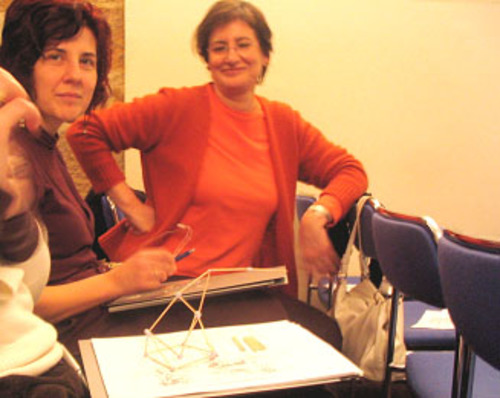Basque Country

Spain - Basque English Teachers' Association Conference
Report on VI BETEA Teachers’ DaySaturday 3rd February saw 40 of us gathering in a room inside a lovely old building – Centro Civico La Bolsa Eraikia – located in the heart of Bilbao’s Casco Antiguo, the historic city centre.
The president of BETEA, Lui Garcia Gurrutxaga, kicked off the day’s proceedings by welcoming all participants to the relaunch of BETEA’s activities as a teachers’ association. Michael King, director of the British Council Bilbao took up the baton by wishing BETEA every success in the future, and impressed everyone present with a short speech in Basque.
![/userfiles/files/beteaday1.jpg [/userfiles/files/beteaday1.jpg]](/userfiles/files/beteaday1.jpg)
The theme of the day was ‘Linking Science with Literature’, which was a great opportunity to explore the rich possibilities that a cross curricular approach offers and to enjoy a number of hands-on science activities. We started with a story, ‘Mirette on the high wire’, which is about a famous high wire walker – Bellini – who has lost his nerve and is only able to regain his self-confidence with the help of his young student, Mirette. After reading out the story, we looked briefly at Bloom’s taxonomy as a framework for lower and higher order activities stemming from both the language and science aspects of the story.
![/userfiles/files/beteaday2.jpg [/userfiles/files/beteaday2.jpg]](/userfiles/files/beteaday2.jpg)
After looking at lower order language activities involving comprehension and summarizing tasks, we moved on to the physics of balance. We looked at how to identify the centre of gravity in objects and people and we looked at what factors affect physical stability and instability.
Not surprisingly it was an ex-yoga teacher who was able to show us that the most stable posture when standing on one foot involves distributing your body mass as widely as possible.
![/userfiles/files/beteaday3.jpg [/userfiles/files/beteaday3.jpg]](/userfiles/files/beteaday3.jpg)
We then looked at how shifting the centre of gravity in four uniform blocks affects stability, and tried to work out how to place the blocks so that they extended as far out over the edge of the table as possible without tipping over.
In the second part of the morning we looked at possible higher order activities. On the language side we explored the notion of balance in metaphors and in the idea of polarized opposites occurring throughout the story (such as fear/confidence, impulsiveness/caution etc.). This took us out into more general notions of balance, and we saw how it is an important aspect of, amongst other things, accounting, justice, yoga, poetry and art. We saw how our intuitive sense of balance regarding rhyme and rhythm enabled us to fill in the gaps in a Lewis Carroll poem, we looked at the idea of compositional balance in a Seurat painting and compositional and physical balance in a Calder mobile. This took us back to physics again and two challenges to round up the session.
First challenge: to make the pencil balance on its point using wire and cloths pegs (as weights). After a while participants realized the trick was to lower the centre of gravity with the pegs, giving the pencil much more stability.
![/userfiles/files/beteaday4.jpg [/userfiles/files/beteaday4.jpg]](/userfiles/files/beteaday4.jpg)
Second challenge: to construct the tower–with-the-most-lean using blutak and toothpicks. Towers had to remain standing for at least two minutes when finished. There were a number of ingenious designs around, such as this one.
This tower looked certain to be the winner, until it started leaning and then actually collapsed, well before the two minutes had passed!
For teachers who are excited by the idea of linking science and literature in their teaching, there is a very strong rationale for doing so. The two curriculum areas mutually reinforce each other, and active experience of science in a story context helps develop process skills in both language and science.
It was definitely a great pleasure to spend the morning working with such a responsive, committed and stimulating group of teachers. I came away from the session with the strong conviction that CLIL is thriving in the Basque region of Spain, and that primary and secondary students here are the lucky benefactors of highly enriched educational opportunities.
Tim Herdon